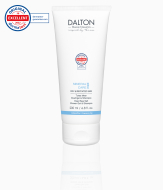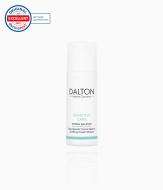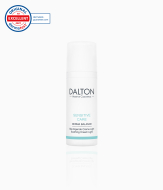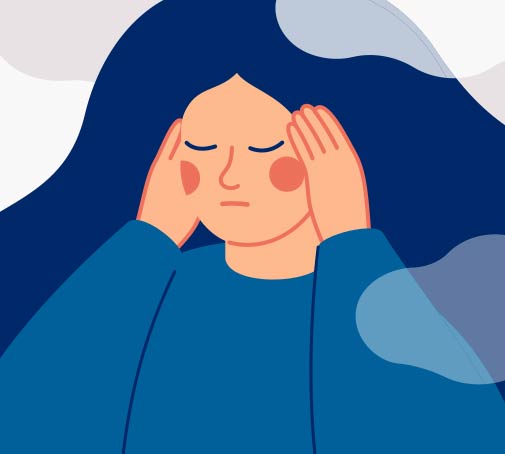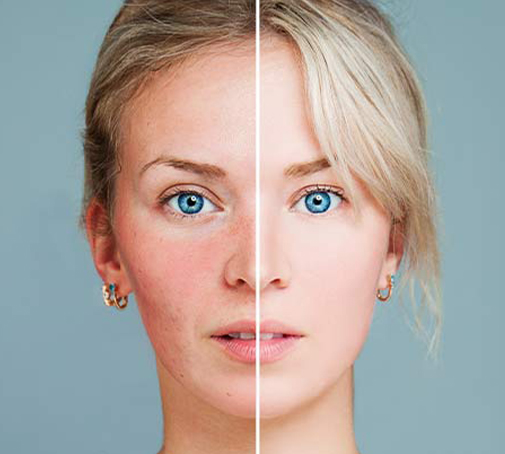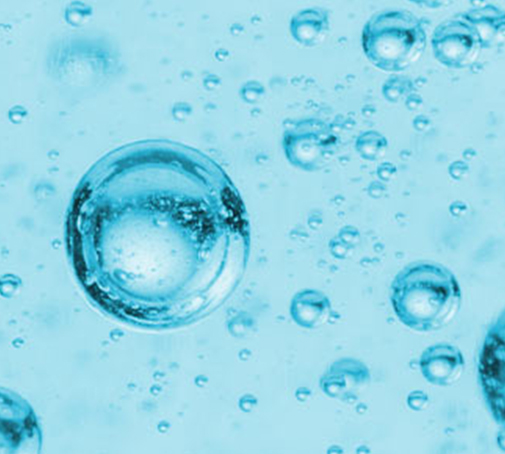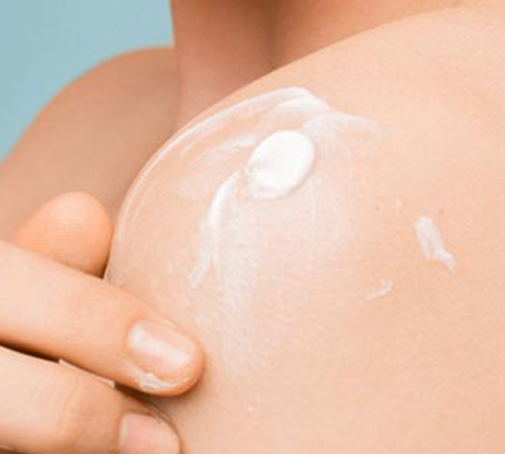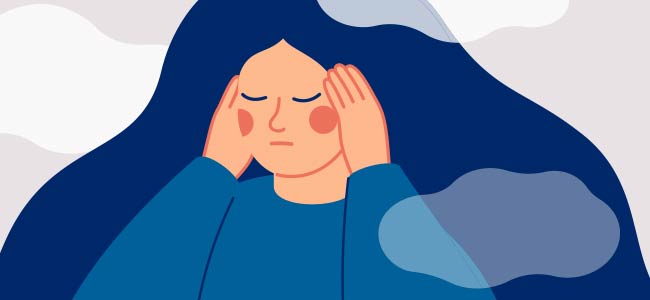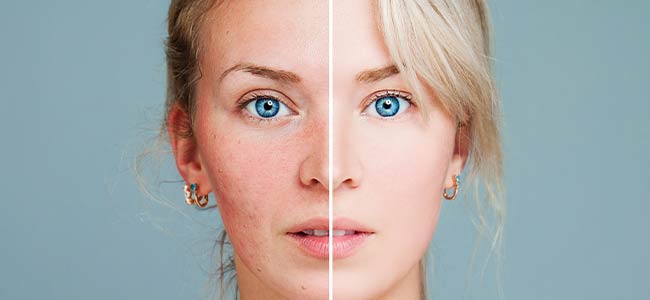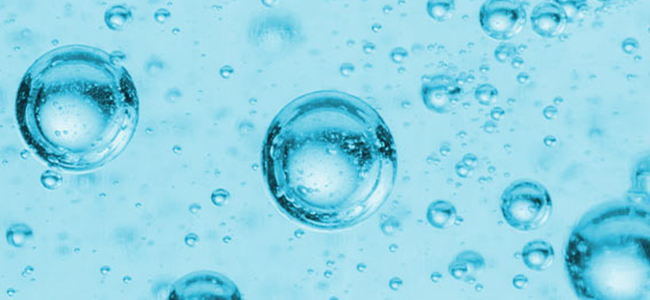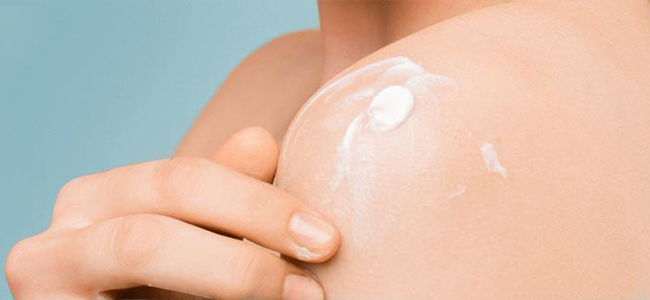

Eczema
Excruciating itching, dry skin, inflammation – and it comes back again and again in recurring flare-ups. Eczema (aka neurodermatitis) can have a major impact on the daily lives of those affected. Read on to find out more about this common skin condition and what forms of therapy and treatment are available.
What is eczema?
Eczema is a chronic, non-contagious skin condition that causes inflammation. Unfortunately, it is not curable and can only be treated for symptoms. It is a very complex skin disease and there is still a lot we do not understand about it, which makes finding the right treatment or therapy a challenge.
Eczema, especially, atopic dermatitis, usually begins in childhood and may even disappear over the years and during puberty. However, in many cases, the disease returns in adulthood.
Dealing with eczema is and remains an uphill struggle for all those affected. Not only is it physically uncomfortable and painful, but severe itching and soreness can also cause problems with sleep and concentration.
How to identify eczema
Eczema and its symptoms are not permanently present, but they occur in acute flare-ups. Meanwhile, the intensity of the flare-ups may increase. How long an eczema flare-up lasts and how painful it is depends, as always, on the severity of the condition.
Symptoms include: Red rash, skin infections, fluid-filled blisters, itchy and weeping sores,
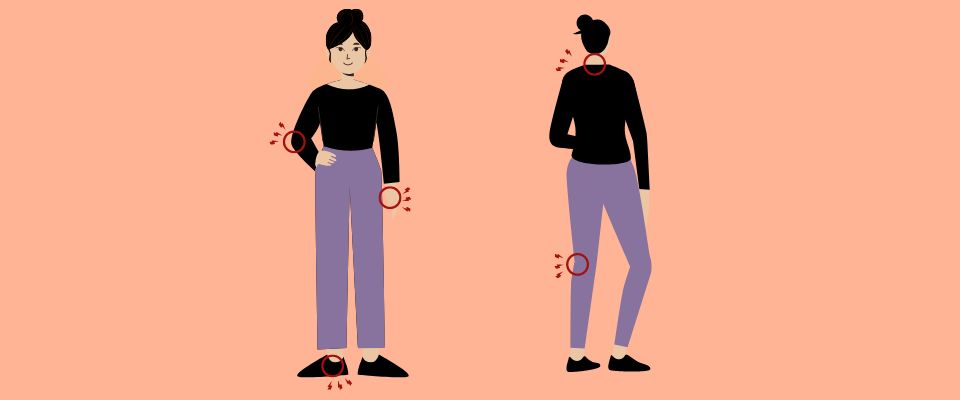

Where does eczema appear?
Eczema appears in a wide variety of places anywhere on the body, depending on age. In infants, it usually develops on the cheeks, arms and legs. In rare cases, rashes may also appear on the back, stomach or chest. In children, adolescents and adults, the face is usually not affected. Typical affected areas are the back of the knees, elbows, neck, palms and soles of the feet.
Where does eczema appear?
Eczema appears in a wide variety of places anywhere on the body, depending on age. In infants, it usually develops on the cheeks, arms and legs. In rare cases, rashes may also appear on the back, stomach or chest. In children, adolescents and adults, the face is usually not affected. Typical affected areas are the back of the knees, elbows, neck, palms and soles of the feet.
What causes eczema to develop?
Regardless of the severity of the condition, anyone who suffers from eczema has a compromised skin barrier. The top layer of skin, the so-called horny layer, cannot perform its protective function, so negative external influences (irritants, allergens and bacteria) can penetrate into the weakened, sensitive skin and cause inflammatory reactions.
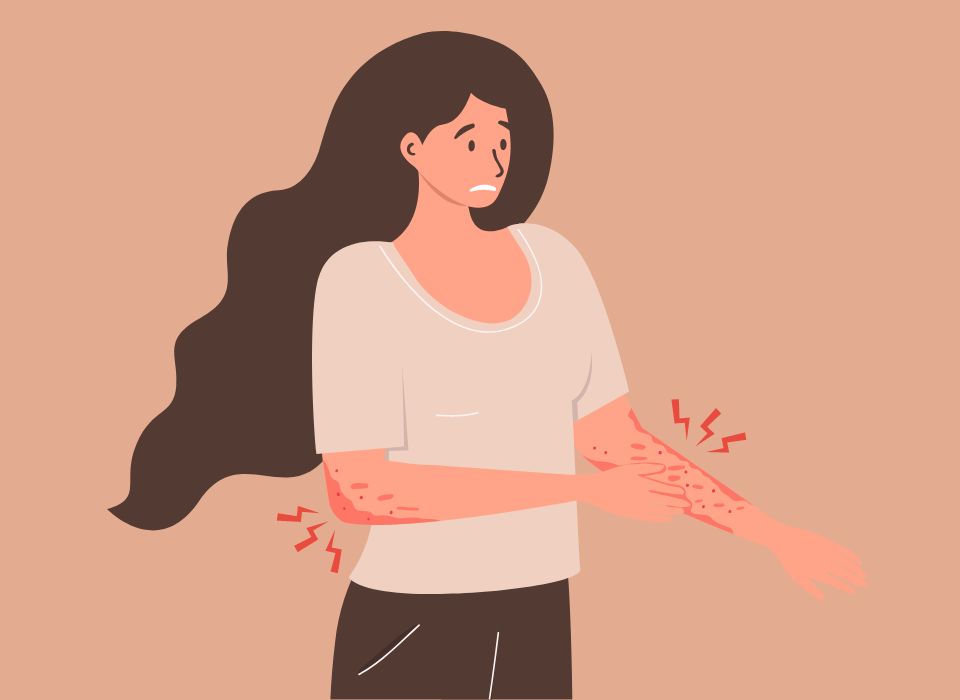

Eczema and a disturbed skin flora often run in the family. More precisely, it is a certain gene, the FLG gene, which inhibits the production of fillagrin, a protein that is very important for the top layer of skin. The resulting deficiency can negatively affect the composition of skin lipids, making it easier for moisture to escape.
Allergic eczema (atopic dermatitis) is the result of the immune system reacting to various allergens with protective anti-bodies to counteract allergic reactions, which can cause inflammation. People who suffer from atopic dermatitis frequently also suffer from other atopic conditions like hay fever, asthma or food allergies. Allergens include, for example, dust mites, pollen or certain foods. Eczema triggered by atopic dermatitis is also called “atopic eczema“.
Eczema can be passed down from one generation to the next. This suggests that the disease may be of genetic origin.
Eczema and a disturbed skin flora often run in the family. More precisely, it is a certain gene, the FLG gene, which inhibits the production of fillagrin, a protein that is very important for the top layer of skin. The resulting deficiency can negatively affect the composition of skin lipids, making it easier for moisture to escape.
Allergic eczema (atopic dermatitis) is the result of the immune system reacting to various allergens with protective anti-bodies to counteract allergic reactions, which can cause inflammation. People who suffer from atopic dermatitis frequently also suffer from other atopic conditions like hay fever, asthma or food allergies. Allergens include, for example, dust mites, pollen or certain foods. Eczema triggered by atopic dermatitis is also called “atopic eczema“.
Eczema can be passed down from one generation to the next. This suggests that the disease may be of genetic origin.
Eczema causes and triggers
An important focus of treatment is to identify possible triggers in the first place, and then avoid them. These include:
- Textiles, such as wool
- Sweating (make sure to wear breathable clothing)
- Major temperature changes (cold weather and indoor heating)
- Soaps and aggressive cleansers (contact dermatitis)
- Cigarette smoke
- Allergy triggers in case of atopic dermatitis
- Stress and mental strain: Autogenic training can help
- Hormonal changes
- Certain foods
How strongly this affects eczema sufferers, remains very individual. While small changes can trigger severe episodes of itchy skin in severe eczema, other patients are not as affected.
Skincare Tips
Every therapy or treatment must be accompanied by appropriate skincare. Here are a few tips on how you can support your skin in the long term.


- Look for lipid-replenishing formulas that do not weigh the skin down and have moisture-binding properties
- Avoid irritants such as dyes or fragrances
- Do not scratch! Scratched eczema can easily become infected
- Use skin-friendly cleansing products with mild surfactants
- Ingredients such as Dead Sea salt, urea, panthenol and glycerin are ideal for your skin
- Look for lipid-replenishing formulas that do not weigh the skin down and have moisture-binding properties
- Avoid irritants such as dyes or fragrances
- Do not scratch! Scratched eczema can easily become infected
- Use skin-friendly cleansing products with mild surfactants
- Ingredients such as Dead Sea salt, urea, panthenol and glycerin are ideal for your skin
Depending on the severity of the disease, there are other treatment options which may only be carried out under the professional supervision of the attending physician. Cortisone in the form of ointments or tablets are one approach. By the way, cortisone may never be used for long-term treatment, only temporarily. Anti-allergy drugs are also hardly effective in atopic dermatitis or atopic eczema. However, there is phototherapy – a treatment that uses UV light to relieve acute flare-ups.
Is it bad to be too hygienic?
The number of skin conditions continues to rise. This leads to the assumption that increasing hygiene standards are often too much of a good thing. Our body and skin come into less contact with germs and are not sufficiently equipped for this. The fact is, anyone who is prone to eczema should take a closer look at their hygiene routine – true to the motto "less is more".
3 Tips for everyday life:
1. Frequent washing can stress the skin and dry it out.
2. Shower instead of taking an extensive bath.
3. Pat the skin dry with a towel. Do not rub. Always apply a moisturizer afterwards.


